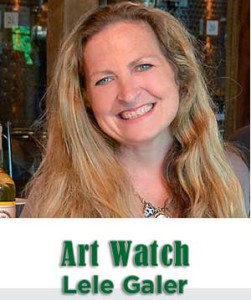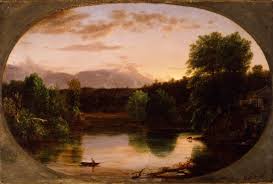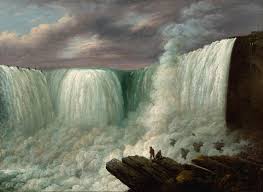‘The Poetry of Nature’ at the Brandywine River Museum of Art
By Lele Galer, Columnist, The Times
 At the Brandywine River Museum of Art, a beautiful new exhibition opened this week through June 12, “The Poetry of Nature: A Golden Age of American Landscape Painting”, which highlights the works from the New York Hudson River School of the 1800s.
At the Brandywine River Museum of Art, a beautiful new exhibition opened this week through June 12, “The Poetry of Nature: A Golden Age of American Landscape Painting”, which highlights the works from the New York Hudson River School of the 1800s.
Forty paintings, including works by Thomas Cole, Asher B. Durand and Albert Bierstadt, were chosen from the collection of the New York Historical Society by Dr. Linda Ferber, Senior Art Historian and Museum Director Emerita of the New-York Historical Society Museum.
The artworks range from medium to grand sized depictions of natural landscapes, forest scenes and soaring vistas. The museum writes that these paintings convey “an idealized image of man living in harmonious balance with nature. Through these remarkable paintings, the expansive spirit and optimism of the nineteenth-century America is rekindled.” A wonderful show for the entire family, the paintings celebrate the extraordinary natural beauty of America in the 1800s, and remind us of the natural beauty of our own Brandywine Valley, which has been such an inspiration to artists for centuries.
The Brandywine River Museum of Art went all out to display this stunning collection. The walls have been painted a deep purple to allow the viewer to be drawn in to these scenic images, like a peep hole into a distant time and place. The period frames are quite eye catching as well; they are heavy, gold gilded, and elaborately carved, and reinforce the pageantry of the images. Back in the 1800s, some of the larger images might have been displayed to the public as singular events, with billowing curtains on either side, and a room filled with orchestral accompaniment, unveiling the grand image to a captivated audience.
According to Tom Padon, Museum Director, this group of New York artists formed the beginning of the first truly American school of art. The artists came to the United States from Europe and were drawn to the Hudson Valley by the extraordinary beauty of the landscape. At that time, much of Europe’s natural forests were already felled, and the hillsides and valleys were marked by centuries of civilization, towns, factories, and roads. The contrast to America’s open natural expanses was met with awe, exhilaration, and a feeling of a divine paradise.
Tom Padon explained that these artists were “celebrating the God-given richness of this landscape.” And that in this celebration, there was an inherent messaging that civilization was beginning to slowly encroach on this stunning beauty. In most of the landscapes and forest images, your first impression is of a sublime, quiet beauty, but if you start to wander through the image you will see deliberate references to the start of man’s impact on that environment. In forest scenes you will notice felled trees (from an ax, not by nature), man-made pathways, and river boats. These subtle images are warnings or predictions of the future disappearance of this beauty, as American civilization expands and builds. This notion of a beautiful, artistically inspiring environment that is on the edge of disappearing, could not find a better museum than The Brandywine River Museum of Art. The Museum heralds the great works of the Brandywine area, and is part of The Brandywine Conservancy that seeks to care for and preserve our area’s historic, inspiring, natural beauty.
This is the kind of exhibit that encourages the viewer to look thoughtfully. While achieving exceptional fame in their own time, this school of art became very out of favor due to its didacticism and romanticized naturalism. In the 1980’s collectors began to rediscover them, and prices soared. Artists today do not paint landscapes like this anymore. Today, we can once again be moved by the paintings, and charmed by the nostalgic idealism. Those panoramic vistas do not exist anymore, as they were changed by the expansion of urbanization, just as the artists had warned.
When visiting the museum, make sure to say hello to the people who work there, and ask them any questions you might have. Time and again, my experience viewing the art has been immensely enriched with discussions with the dedicated, passionate and thoughtful people that staff every part of the museum. The curator of this exhibition, Linda Ferber, in an expert in American Art of the 1800s, and she speaks so eloquently, with such lively detail, that you are immediately drawn into the grandeur of the vision and the excitement of the period.
Likewise, hearing the Director move effortlessly from one painting to the next, discussing the works with such familiarity and enthusiasm, was an absolute delight. Andrew Stewart, Director of Marketing and Communications, got into a memorable side discussion of differences between the 19th Century Scottish landscape paintings and those of the Hudson River School. Please check the museum website for the many opportunities during the next few months to attend curator lectures and docent tours. Next week, March 30th, Virginia O’Hara, Curator of Collections will hold a gallery talk that is sure to be fascinating.








